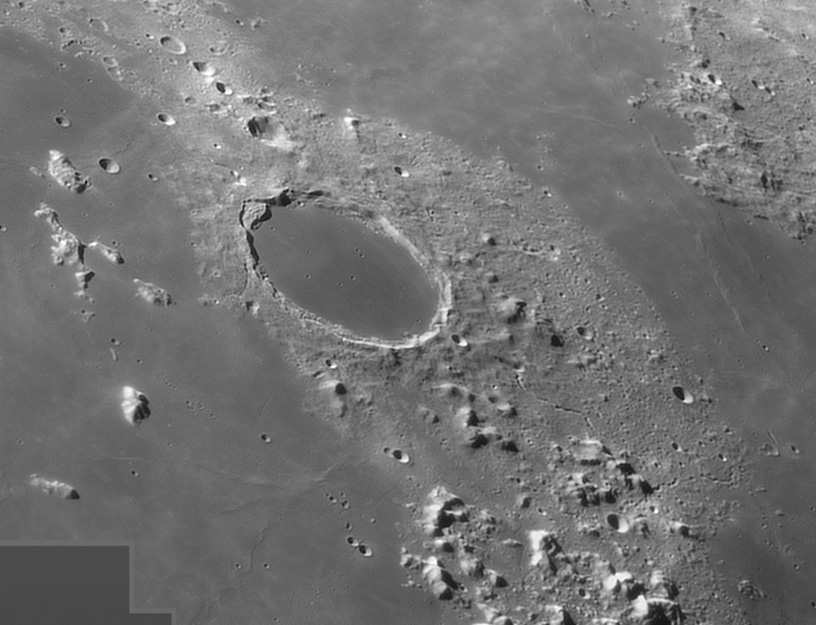
image by Alan Friedman
Sinuous rilles are lava channels and form where lavas erupt to the surface – thus most sinuous rilles are found on maria. So how do we account for the four sinuous rilles that originate in the rough terrain surrounding Plato? First, do you see the rilles? One short one emerges from close to Plato’s southern rim and travels a few kilometers until it disappears at Mare Imbrium. Another rille starts at an elongated depression east of Plato and travels northeastward through the edge of the Alps Mountains. A third short rille occurs further to the northeast and stops where it reaches Mare Frigoris. The last rille, near the west rim, is only slightly visible on this image but is well seen here. In addition, there is a highly sinuous rille on the mare patches in the western Alps. The large mountains in this area are part of the ejecta from the impact that formed the Imbrium basin, but the smaller hills are probably ejecta from Plato. Here is a speculative scenario. Imbrium and the Alps formed. Then came Plato and its ejecta. During a later time when Imbium’s lavas were emplaced, magma rose up fractures under Plato, covering the crater’s floor with dark basalt, and some of the magma leaked to the surface outside the rim, causing the eruptions of lava that made the sinuous rilles. This idea is supported by the observation that spectrally the rim of Plato appears to be coated by glassy pyroclastics (ash). Also, the fact that two of the rilles stop when they reach Imbrium and Frigoris means that those maria were emplaced after the rilles formed. However, the westernmost rille continues onto Imbrium, showing that some rille formation occurred after nearby Imbrium lavas erupted. Of course, rilles like the ones described may have provided some of the lavas that make up Mare Imbrium! I see some weaknesses in my scenario, but it is a start in untangling this complex interplay of volcanism and cratering.
Technical Details:
10″ mak/cass at f30 with a DMK B&W firewire webcam; about 120 images were processed to make this panorama.
Related Links:
Rükl charts 3 & 4
Alan’s entire image
LO-IV view
Yesterday's LPOD: Wall Stories
Tomorrow's LPOD: Different Populations of Lunar Craters
COMMENTS?
Register, Log in, and join in the comments.



